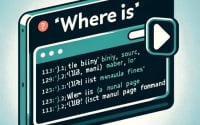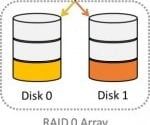How to Use chmod +x | Make Files Executable in Unix

As we handle various scripts and applications on servers at IOFLOOD, understanding the chmod +x command becomes vital for ensuring files are executable. To assist our bare metal hosting customers and fellow developers, we have crafted today’s article on with step-by-step examples and explanations on managing file permissions in Unix systems.
In this guide, we’ll walk you through the process of using chmod +x in Unix, from the basics to more advanced techniques. We’ll cover everything from making a simple file executable, to handling different file permissions, and even troubleshooting common issues.
So, let’s dive in and start mastering chmod +x!
TL;DR: How Do I Use chmod +x in Unix?
To make a file executable in Unix, you use the
chmod +xcommand followed by the filename. This command changes the permission of the file, allowing it to be executed as a program.
Here’s a simple example:
chmod +x myscript.sh
# Output:
# No output. The file 'myscript.sh' is now executable.
In this example, we’ve used the chmod +x command to make the file named ‘myscript.sh’ executable. Now, you can run this file as a program in your Unix system.
But there’s much more to learn about file permissions and the chmod command in Unix. Continue reading for more detailed information and advanced usage scenarios.
Table of Contents
Grasping the Basics of chmod +x
The chmod +x command in Unix is a fundamental command that every Unix user should familiarize themselves with. It stands for ‘change mode’ and is used to change the permissions of a file. The +x part of the command is an argument that instructs Unix to add the ‘execute’ permission to the specified file.
Let’s take a look at an example:
touch example.txt
chmod +x example.txt
ls -l example.txt
# Output:
# -rwxr-xr-x 1 user group 0 date example.txt
In this example, we first create a new file called ‘example.txt’ using the touch command. We then make this file executable using the chmod +x command. Finally, we use the ls -l command to display the file’s permissions. The -rwxr-xr-x output indicates that the file is now executable by the user.
This command is incredibly useful for scripts and programs that need to be run directly from the command line. However, it’s essential to use this command judiciously. Making a file executable that shouldn’t be can pose security risks. Therefore, always ensure you understand the file’s purpose before changing its permissions.
Advanced chmod +x Techniques
While the chmod +x command is straightforward, it’s essential to understand that it’s part of a larger system of file permissions in Unix. This command specifically adds execute permissions, but there are other permissions and chmod commands to be aware of.
Understanding File Permissions
In Unix, file permissions are represented by a string of characters, such as -rwxr-xr-x. This string is broken down into four parts:
- The first character indicates the file type (
-for a regular file,dfor a directory). - The next three characters represent the file owner’s permissions (read, write, execute).
- The following three characters represent the group’s permissions.
- The final three characters represent everyone else’s permissions.
In these groups of three, a r represents read permissions, a w represents write permissions, and an x represents execute permissions. A - in place of any of these characters means that permission is not granted.
Modifying Different Permissions
The chmod command allows you to modify these permissions. For instance, chmod +r adds read permissions, and chmod +w adds write permissions. You can also remove permissions with -, like chmod -r to remove read permissions.
Here’s an example of using these commands:
ls -l example.txt
chmod -x example.txt
ls -l example.txt
# Output:
# -rwxr-xr-x 1 user group 0 date example.txt
# -rw-r--r-- 1 user group 0 date example.txt
In this example, we first display the permissions of ‘example.txt’, which are -rwxr-xr-x (read, write, and execute for the user). We then use chmod -x to remove the execute permissions. When we display the permissions again, they are -rw-r--r-- (read and write for the user, but no longer execute).
It’s important to note that using chmod without any user specifications changes the permissions for all users (owner, group, and others). To specify permissions for just the owner, group, or others, you can use u, g, and o, respectively. For example, chmod u+x adds execute permissions for only the owner.
Understanding and managing file permissions is crucial for maintaining the security and functionality of your Unix system. Always be mindful of the permissions you’re granting and to whom.
Alternative Permission Methods
While chmod +x is a powerful command, Unix provides other ways to manage file permissions. These alternatives can offer more control and flexibility, making them useful for advanced users.
Numeric Mode with chmod
One such alternative is using numeric mode with chmod. Instead of using r, w, and x, you can use numbers to represent permissions. In this system:
- 4 stands for ‘read’
- 2 stands for ‘write’
- 1 stands for ‘execute’
You can add these numbers together to represent multiple permissions. For example, 7 (4+2+1) stands for ‘read, write, and execute’.
Here’s how you can use chmod with numeric mode:
ls -l example.txt
chmod 744 example.txt
ls -l example.txt
# Output:
# -rw-r--r-- 1 user group 0 date example.txt
# -rwxr--r-- 1 user group 0 date example.txt
In this example, we first display the permissions of ‘example.txt’, which are -rw-r--r-- (read and write for the user). We then use chmod 744 to change the permissions. The 7 grants the user read, write, and execute permissions, while the two 4s grant the group and others only read permissions. When we display the permissions again, they are -rwxr--r--.
Pros and Cons
The numeric mode offers a more concise and powerful way to manage permissions. It allows you to set all permissions in one command, rather than using multiple + and - commands. However, it can be less intuitive than the symbolic mode (r, w, x), especially for beginners.
Understanding these alternatives can help you choose the right tool for the job. Whether you prefer the simplicity of chmod +x or the power of numeric mode, Unix offers the flexibility to manage file permissions in a way that suits your needs.
While chmod +x is a reliable command, you may occasionally run into issues. It’s important to understand these potential roadblocks and how to navigate them.
Permission Denied Errors
One of the most common issues you might encounter is the ‘Permission denied’ error. This happens when you try to change the permissions of a file owned by another user. Unix systems are designed to prevent unauthorized changes to files, which includes changing permissions.
Here’s an example of what you might see:
chmod +x /etc/passwd
# Output:
# chmod: changing permissions of '/etc/passwd': Operation not permitted
In this example, we tried to change the permissions of ‘/etc/passwd’, a file typically owned by the root user. Because we’re not the root user, Unix denies the operation.
Solving Permission Denied Errors
The solution for this issue is to either become the root user with the su command or use sudo before the command to temporarily elevate your permissions. Note that not all users will have the ability to use sudo – it’s typically restricted to administrators.
Here’s how you can use sudo to change permissions:
sudo chmod +x /etc/passwd
# Output:
# [sudo] password for user:
In this example, entering the correct password after the prompt would allow the chmod +x command to execute successfully.
Remember, with great power comes great responsibility. Changing file permissions can have significant effects on your system’s security and functionality. Always double-check your commands, understand the file you’re modifying, and consider the implications of your changes.
Unix File Permissions: A Deep Dive
To fully grasp the chmod +x command, it’s essential to understand the fundamentals of file permissions in Unix-like systems. These permissions control who can read, write, and execute files.
The Structure of File Permissions
In Unix, each file and directory has three types of permissions: read (r), write (w), and execute (x). These permissions are set for three different kinds of users: the file owner, the group, and others.
You can view these permissions using the ls -l command. Here’s an example:
ls -l example.txt
# Output:
# -rw-r--r-- 1 user group 0 date example.txt
In this example, the -rw-r--r-- string represents the file’s permissions. The first character (-) indicates that this is a regular file. The next three characters (rw-) represent the owner’s permissions (read and write, but not execute). The following three characters (r--) represent the group’s permissions (read only), and the final three characters (r--) represent the permissions for others (also read only).
Changing File Permissions
The chmod command allows you to change these permissions. For example, chmod +x adds execute permissions for all users. If you wanted to add execute permissions only for the owner, you could use chmod u+x.
Here’s an example of using chmod u+x:
ls -l example.txt
chmod u+x example.txt
ls -l example.txt
# Output:
# -rw-r--r-- 1 user group 0 date example.txt
# -rwxr--r-- 1 user group 0 date example.txt
In this example, we first display the permissions of ‘example.txt’, which are -rw-r--r--. We then use chmod u+x to add execute permissions for the owner. When we display the permissions again, they are -rwxr--r-- (read, write, and execute for the owner).
Understanding file permissions and how to change them is crucial for working with Unix-like systems. It allows you to control access to your files and maintain the security of your system.
Practical Uses of chmod +x
The chmod +x command, while simple, has wide-ranging implications in various areas of Unix system use. Its utility extends beyond making a file executable – it plays a pivotal role in shell scripting, server administration, and more. Understanding chmod +x is just the beginning of your journey into Unix file permissions.
chmod +x in Shell Scripting
In shell scripting, chmod +x is essential for running scripts. Without the execute permission, Unix systems cannot run your scripts, limiting what you can do. Here’s an example of a shell script and how chmod +x comes into play:
echo '#!/bin/bash' > hello.sh
echo 'echo Hello, world!' >> hello.sh
chmod +x hello.sh
./hello.sh
# Output:
# Hello, world!
In this example, we create a simple shell script that prints ‘Hello, world!’ and make it executable using chmod +x. We can then run the script using ./hello.sh, which wouldn’t be possible without the chmod +x command.
chmod +x in Server Administration
In server administration, chmod +x is crucial for managing access to critical files and services. For instance, server administrators may use chmod +x to control which users can run certain server maintenance scripts.
Exploring Related Concepts
Beyond chmod +x, there are other related concepts that are worth exploring, such as file ownership and groups. These concepts further refine who can read, write, and execute files, allowing for more granular control over file permissions.
Further Resources for Mastering Unix Permissions
To deepen your understanding of Unix file permissions, consider exploring these resources:
- Understanding Unix Permissions – Learn the fundamentals of Unix file permissions and how to manage access rights effectively.
Unix File Permissions Tutorial – A step-by-step tutorial on Unix file permissions.
Understanding Linux File Permissions – A detailed explanation of Linux file permissions, which are similar to Unix.
These resources can provide a deeper dive into the world of Unix file permissions, helping you to become more proficient in managing and troubleshooting your Unix system.
Recap: chmod +x Usage Guide
In this comprehensive guide, we’ve unlocked the power of chmod +x in Unix, a command that allows you to make files executable.
We started with the basics, learning how to use chmod +x to make a file executable. We then delved into the world of file permissions in Unix, understanding the structure of permissions and how chmod +x plays a role in this system.
Our journey took us further into the advanced usage of chmod +x, where we learned how to modify different permissions and the implications of such changes. We also explored alternative approaches, such as using numeric mode with chmod, to provide you with more control and flexibility when managing file permissions.
Along the way, we tackled common issues that you might face when using chmod +x, such as ‘Permission denied’ errors, and provided solutions to help you overcome these challenges.
We also looked at how chmod +x extends into various areas of Unix system use, such as shell scripting and server administration, showing the wide-ranging implications of this simple command.
Here’s a quick comparison of the methods we’ve discussed:
| Method | Pros | Cons |
|---|---|---|
| chmod +x | Simple, makes files executable | Can pose security risks if misused |
| chmod with numeric mode | More control over permissions | Less intuitive for beginners |
Whether you’re just starting out with Unix or you’re looking to level up your file permission skills, we hope this guide has given you a deeper understanding of the chmod +x command and its capabilities.
Understanding chmod +x is just the beginning of your journey into Unix file permissions. With this knowledge, you’re well equipped to manage file permissions effectively and securely. Happy coding!


